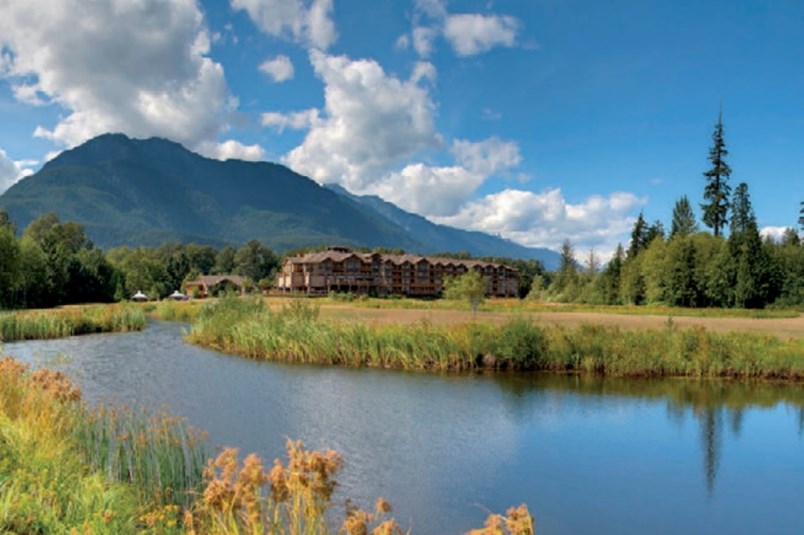After two rounds before council and controversy both offline and online, the Garibaldi Springs proposal on the former golf course lands passed third reading at council on Tuesday night.
Approval to rezone the property — allowing for residential construction on four parcels in exchange for habitat restoration, trails and other amenities — passed in a dramatic 4 to 3 vote.
Councillors Jason Blackman-Wulff, Susan Chapelle and Peter Kent voted against moving it forward, while Councillors Karen Elliott, Ted Prior, Doug Race, and Mayor Patricia Heintzman supported it.
“This has been a challenging application for council and staff. It’s come a long way,” said Heintzman, referencing the bitter back-and-forth over the project since it was first proposed in January.
“Ironically I think people supporting this project are doing it for environmental reasons, and people against the project are doing it for environmental reasons,” said Heintzman. “I think that’s the irony of all this. I think this is actually a legacy project for the community.”
Debate raged both online and at public hearings over whether the proposal would improve or hamper the existing habitat. Concerns were also raised about nearby views and traffic. Part of the proposal includes space for a daycare and contributions to affordable housing.
Extensive arguments for and against the development were heard at a public hearing on Sept. 6 and reported on in by The Squamish Chief.
On Tuesday night the high stakes debate continued between councillors — reaching the point where Blackman-Wulff compared the area to Stanley Park. He said he was disappointed by the “lack of backbone” on council and told Elliott she needed to “develop a thick skin” if his comments bothered her.
For most councillors, votes on Tuesday night came down to environmental protection — but as Heintzman pointed out, there were two very distinct points of view on how to achieve that goal.
Chapelle and Kent argued that nature was already overtaking the area.
“Humans don’t have to be in every ecological habitat, it’s not our right,” argued Chapelle. “Maybe one day we’ll come to a time that we need to rezone green space, but I find there are brownfields that we can develop.”
Chapelle said she had doubts that federal agencies would be able to properly oversee the restoration of the land.
But the majority vote said the agreement with Polygon Homes — which will see around 80 per cent of the land set aside as a publicly owned ecological reserve, trails, and parkland — was the best option to repair the damage done by the golf course.
Coun. Prior said what he’d read from “qualified environmental people” didn’t match the discussion around the table.
Coun. Race agreed, noting that the former golf-course was non-ideal habitat. He said he saw the site as “almost a brownfield” after the environmental devastation of a golf course.
“I don’t think a marquee piece of land should be one that could be sold to an offshore developer and have a fence go up, that does not make sense to me,” said Elliott. “It puts it back into public hands, which is exactly where it should be.”
The 48.3 acres of land, which is currently designated as green space, will now likely be rezoned to allow for residential construction of 310 units on 21 per cent of the land.
While the zoning change is not formally complete until council passes final adoption, it is unusual for such a vote to conflict with third reading.
Final approval will be followed by the dedication of public land, an environmental development permit, site alteration permit and phase one of development.



